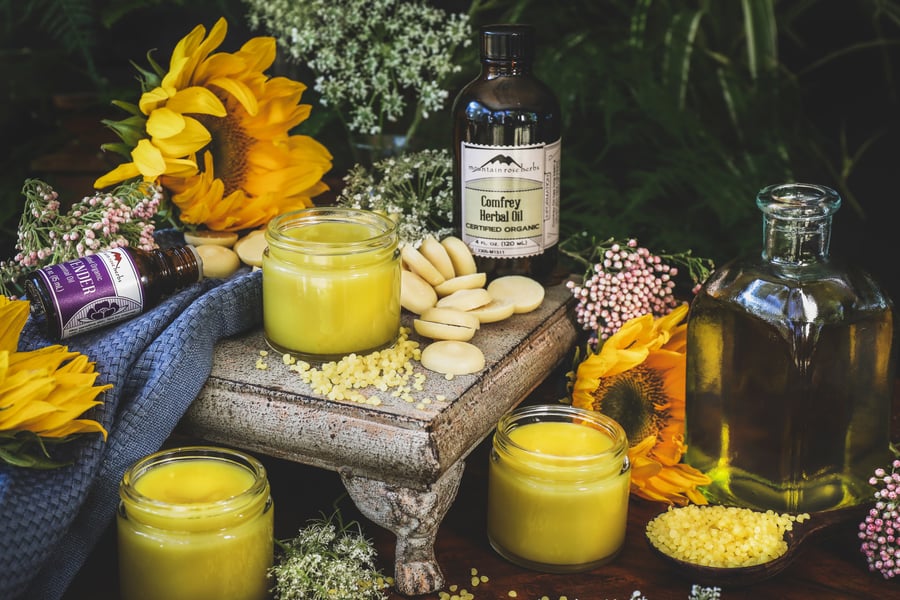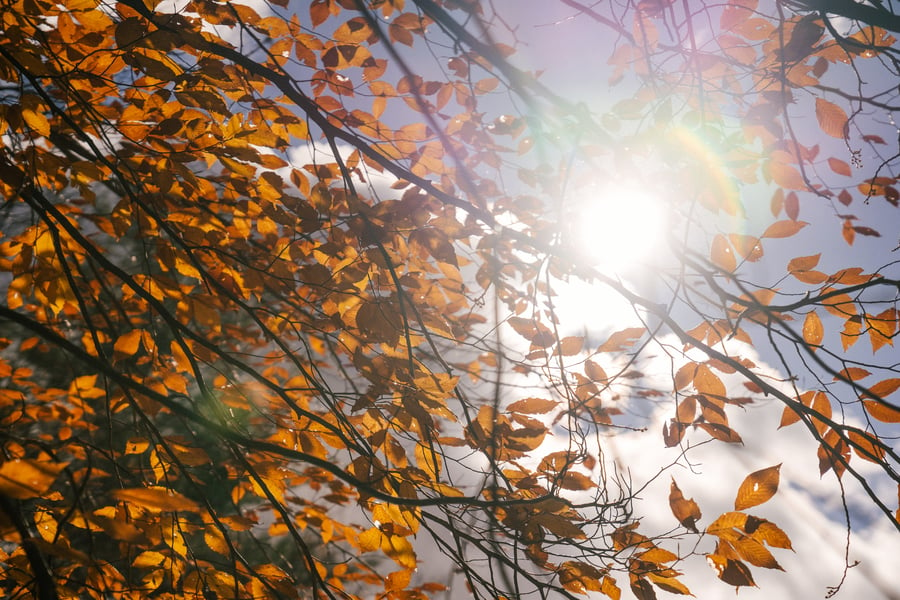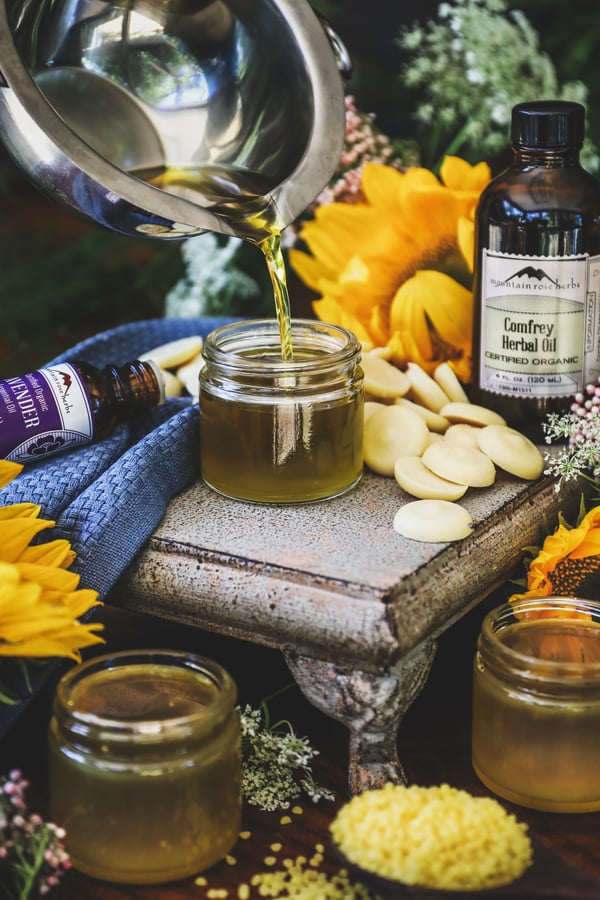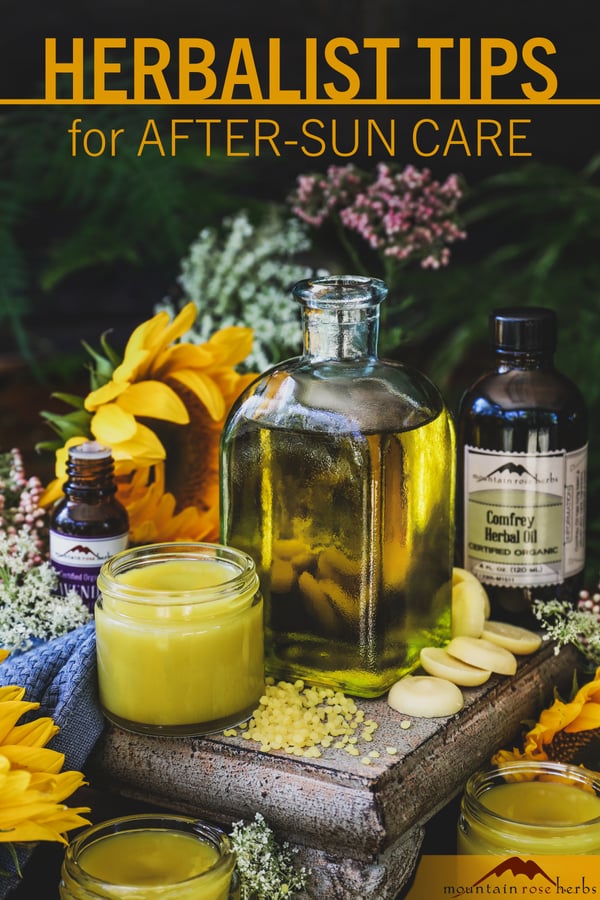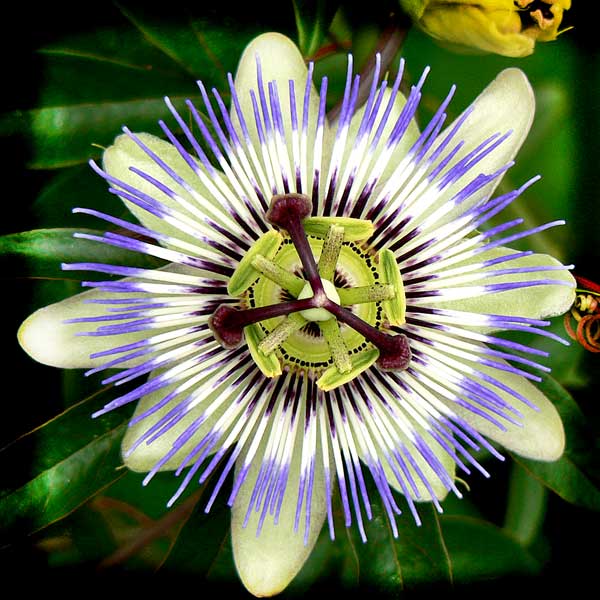With the heat and sun come sunburn, heat rash, heat exhaustion, and even heat stroke. There are things we can do to prevent these from happening and natural remedies for when they do.
Why Do We Get Sunburn?
Sunburn is an acute inflammatory response by the skin in reaction to excessive exposure to sunlight. The harmful changes that occur in the skin cells’ cytoplasm (a gel-like substance that is between the cell membrane and nucleus) and the nucleus itself are cumulative over a lifespan and can lead to an increased incidence of skin cancer. Sunburn is common in this era of popular outside summer activities and clothing styles that leave more skin exposed to the sun’s damaging UVA and UVB rays. We’ve all had that burning sensation after being in the sun too long. While limiting sun exposure is the most reliable method of preventing sunburn, we do want to be able to bask in the sun, don’t we?
Natural Ways to Prevent Sunburn
- Limit exposure. Sun rays are strongest between the hours of 10 and 4. Try to avoid exposure during these hours, if possible. The effect of UV rays is stronger as we gain elevation.
- Wear lightweight clothing that covers the skin. White or light-colored clothing is better than dark clothing. Consider wide-brim hats, long sleeves, and long pants. Clothing that contains resins and substances that absorb and/or scatter UV rays can be worn.
- Sunscreen/Sunblock. While sunblock is controversial as commercial products contain chemicals that arguably may be carcinogenic or endocrine disruptors, applying some sort of preparation can be beneficial to scatter or block UV rays. Lotions that contain titanium dioxide and/or zinc oxide are good choices. Apply to all exposed areas, including the ears, lips, back of the neck, tops of the feet, backs of the hands, and the part in your hair. Apply frequently.
- Be mindful of pharmaceutical drugs/herbs and possible sun interactions. Some herbs, such as St. John’s Wort, if taken internally, can make a person photosensitive. Consider purchasing a Nursing Drug Handbook by Wolters Kluwer. It’s my go-to book to look up drugs to find herbal interactions and adverse reactions.
What to Do When You Get a Sunburn
- Get out of the sun! Once you feel the first inkling of a burn, move to a shady area or indoors.
- Tepid to cool, not cold, water applications. This can mean submerging the burn in a cool bath or soaking a cloth in cool water and applying it as a compress. Consider adding a small amount of willow tincture to the water.
My favorite herbal sunburn relief is an application of a homemade comfrey salve (recipe below). The allantoin in comfrey is much like aloe gel, in that it is very moisturizing and soothing to damaged skin cells. Apply immediately after a sunburn occurs and then several times a day for a few days after. Keep the salve in the fridge for an additional cooling effect. Salves containing camphor and menthol, including peppermint oil, can help alleviate the burning sensation. These should be used sparingly. If you plan to make your own, use a very small amount of essential oils, such as 1-3% in the preparation.
Comfrey Salve Recipe for After-Sun Care
Ingredients
- 1/4 oz organic beeswax
- 1 oz. organic cocoa butter
- 4 oz. organic comfrey oil
- 1/4 tsp. organic lavender essential oil
Directions
- Melt the beeswax in the top of a double boiler.
- Add in the cocoa butter and once melted, remove from heat.
- Pour in comfrey herbal oil and essential oil into mixture
- Pour into clean jars and allow to fully cool before placing lids on.
- Label with ingredients and date made.
Pro Tips
- Wise herbalists know there is more allantoin in the stems of comfrey than the leaves and to use 3 parts stems to 1 part leaves to make a super moisturizing and skin-supporting oil. If making your own herbal oil, cut stems into 1-inch pieces immediately after harvesting as they tend to oxidize rather quickly. Place the stems and gently torn leaves into a food processor with a bit of extra virgin olive or oil of choice, and blend to a paste. Scrape the mass into a slow cooker, add more oil to cover the herbs, plus about 1/2 inch above the plant material. Cook on low for 2 1/2 to 3 days. Stir the plant material twice a day to ensure complete extraction and water evaporation.
Easy Sunburn Relief Oil
This two-ingredient recipe relieves sunburn and helps to prevent peeling.
Ingredients
- 3/4 cup organic olive oil
- 1 tsp. organic lavender essential oil
Directions
- All olive oil and essential oil for glass bottle
- Label with ingredients and date made.
- Use liberally several times a day as needed. Avoid contact with the eyes.
Vitamin D From the Sun
Sun exposure is very important for Vitamin D production in the body. Vitamin D plays a big part in immune and neuromuscular function, in the modulation of cell growth, reduction of inflammation, and the uptake of calcium and phosphorus in the bones. When the sun hits the cholesterol in skin cells, it triggers vitamin D synthesis. Vitamin D synthesis with the help of the sun is more healthful than taking vitamin D supplements. Exposure to the rising and setting sun helps to heal damaged mitochondria due to tech exposure. Sun is a good thing! However, we need to be mindful of the amount of time our skin is exposed to sun rays.
Heat Rash
Heat rash, also known as prickly heat, is caused by blocked sweat glands trapping perspiration under the skin. Symptoms can include superficial blisters to deep red bumps. Heat rash can be intensely itchy. The most common places for heat rash to occur are in the folds of the body such as under the breasts, the groin, elbows, armpits, etc.
What to Do when you have a Heat Rash
- Again, like sunburn, the best way to resolve heat rash is to get out of the sun and heat.
- Hydrate, hydrate, hydrate. Cool water applications can be beneficial.
- Wear loose clothing and avoid strenuous activity. If the heat rash involves symptoms such as increased pain in the affected area after cooling has occurred, pus discharge, fever, chills, or swollen lymph, seek medical attention.
Heat Exhaustion and Heatstroke
The body has regulatory processes in effect to maintain a stable and relatively constant temperature. When a person becomes cold, the muscles shudder to create heat. When hot, sweat glands bring perspiration to the surface of the skin. As the perspiration evaporates with air contact, the body is cooled. Upon extreme heat, humidity, strenuous activity, wearing too many layers or tight-fitting clothes, certain drugs, and dehydration (to name a few), heat exhaustion and the more dangerous and life-threatening heat stroke can occur. The body becomes too hot to self-regulate. Symptoms of heat exhaustion can include extreme fatigue, cool moist skin with goosebumps in the heat, dizziness or fainting, nausea, cramping, flushed or pale skin, headaches, and weak/rapid pulse. Heat stroke includes the previous symptoms with the addition of unconsciousness, confusion, delirium, hallucinations, slurred speech, and irritability. These are only partial symptoms.
Heat Exhaustion and Heat Stroke Prevention
- Stay out of the sun and heat during the peak hours.
- Drink hydrating liquids
- Stay away from alcohol. While enjoying a cold brew in the sun might sound refreshing, alcohol puts a strain on the liver and kidneys. Alcohol is also a diuretic. Diuretics leach potassium from the body. Potassium is a vital electrolyte that governs muscle cramping and heartbeat.
- Avoid strenuous activity of any kind.
- Avoid overdressing, especially in synthetic fabrics. Wear loose-fitting, light-colored clothing.
What to do when Someone is Experiencing Heat Exhaustion or Heat Stroke
- If a person exhibits any of the above symptoms, call 911. It is imperative to start treatment immediately before help arrives.
- Get them out of the sun and into shade or a cool place.
- Remove excess clothing.
- Cool the person down with whatever means you have at your disposal. Spray them down with water from a hose, have them sit in the tub with cool water showering over them. Apply ice packs or cool water compresses to the back of the neck, groin, armpits, and head.
- If the person is conscious and can take fluids, give them cool water. Avoid coffee and alcohol.
I hope this information helps you stay safe and comfortable while enjoying the last bits of the summer heat. Stay cool, my friends. If you want to find me, I’ll be the one sipping cool water with a bit of crushed fresh spearmint in the glass.
Looking for More Educational Content from Suzanne?
Find Her at Cedar Mountian Herb School!
You may also be interested in:
5 Natural Recipes For When You've Had Too Much Sun
Fruit and Herb-Infused Water Recipes
Ayurvedic Cooling Drink with Amla

